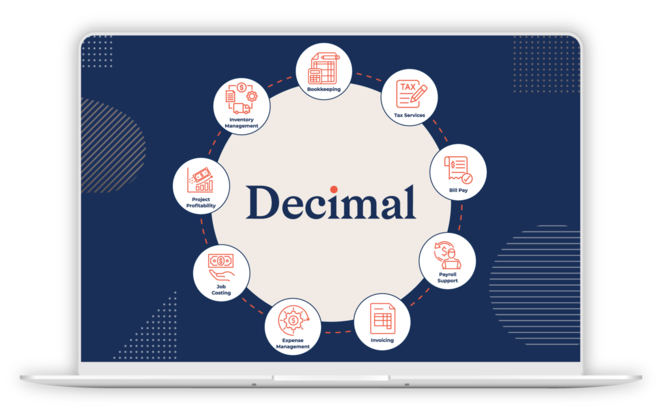Editor’s Note: This article is part of a series. View all the articles in this series here: QuickBooks Online Tips
Running an online business brings many opportunities, but managing the financial side can quickly become overwhelming. With multiple sales channels, payment processors, and tax considerations, keeping everything organized in QuickBooks Online (QBO) is essential for accurate financial reporting and smooth operations.
Understanding how to effectively integrate e-commerce platforms with QBO can save time, improve accuracy, and help you gain a clearer picture of your business performance. This guide will walk you through the key considerations, available integration methods, and tools that can streamline the process.
Understanding the e-commerce ecosystem
Before deciding on an integration strategy, it's important to understand the different components that make up an e-commerce operation:
- Website Shopping Carts – Online stores with their own checkout systems, such as Shopify, WooCommerce, and BigCommerce.
- Retail Marketplaces – Platforms where multiple sellers list products, such as Amazon, eBay, and Etsy.
- Payment Processors – Services that handle online payments, including Stripe, Square, and PayPal.
Each of these elements contributes to how sales data flows into QuickBooks Online and must be considered when choosing an integration method.
Why integrate e-commerce with QuickBooks Online?
Integrating your online sales with QuickBooks Online offers several advantages:
- Accurate Reporting – Gain insights into sales performance, profitability, and trends.
- Centralized Data Management – Consolidate financial data from multiple platforms into one system.
- Improved Accuracy – Reduce manual data entry and minimize errors.
- Simplified Tax Compliance – Track and report sales tax efficiently.
However, integrating every single transaction may create data overload and require additional effort to reconcile discrepancies. In some cases, summarizing sales data instead of importing individual transactions is a more efficient approach.
Choosing the best integration method
There are several ways to bring e-commerce data into QuickBooks Online. The best method depends on the volume of transactions, level of detail needed, and how much manual effort you're willing to invest.
Direct integrations
Many e-commerce platforms offer built-in integrations with QBO. This is often the simplest method and allows for automatic syncing of transactions, fees, and refunds. Check your platform’s "Integrations" or "App Store" to see if QBO is supported.
Banking feed
The banking feed in QuickBooks Online imports sales deposits from payment processors, but these entries usually only reflect net amounts after fees, requiring manual adjustments to capture gross sales and processing fees accurately.
Sales summaries (daily or monthly)
Instead of importing every individual transaction, a sales summary method allows for importing a daily or monthly total into QuickBooks Online. This approach:
- Keeps QBO clean and manageable, avoiding excessive transaction entries.
- Simplifies bookkeeping while still providing meaningful financial reports.
- Works well for businesses that already track detailed sales data within their e-commerce platform.
Individual sales transactions
Importing each transaction separately provides the most detail but can quickly clutter QBO, making reconciliation more difficult. This method is best suited for businesses that require detailed order-level tracking within QuickBooks.
Clearing accounts
Using a clearing account for each sales channel allows for better tracking of:
- Sales revenue
- Processing fees
- Payout deposits
This method helps maintain clean reconciliations between e-commerce platforms and QBO.
Third-party apps
When native integrations fall short, third-party apps like Synder (for detailed transaction imports) or Bookkeep (for simplified sales summaries) can provide more tailored and efficient solutions.

Key considerations for e-commerce integration
Before setting up an integration, evaluate these critical factors:
Inventory management
- Will you track inventory in QBO, your e-commerce platform, or a separate system?
- Ensure that your chosen integration method correctly handles inventory adjustments.
Sales tax compliance
- Determine where you have sales tax nexus and whether QBO or a third-party app like Avalara or TaxJar is needed to manage tax collection and reporting.
Returns and refunds
- Ensure that refunds and chargebacks are properly recorded in QBO.
- Choose an integration that handles reversals and adjustments accurately.
Processing fees
- Payment processors deduct fees before depositing sales revenue.
- Choose a method that captures both gross sales and associated fees for accurate reporting.
Reconciliation efficiency
- The simpler the integration, the easier it will be to match deposits to sales records and ensure accurate reporting.
QuickBooks Online’s built-in e-commerce tools
QuickBooks Online provides several built-in features that help with e-commerce bookkeeping:
PayPal integration
- Imports individual transactions with associated fees.
- Allows tracking of sales, expenses, and refunds.
- Provides customer and item-level reporting but requires extra reconciliation work.
Integration transactions
- Connects with Square, Shopify, eBay, Etsy, and Amazon Seller.
- Automates data import but may not provide detailed transaction matching.
Commerce center
- Provides a dashboard view of sales across connected channels.
- Offers insights into total sales and trends, but does not directly sync individual transactions with QBO.
When QBO isn’t enough: using third-party apps
For businesses processing high transaction volumes or requiring specialized reports, QuickBooks Online's built-in tools may not be sufficient. Third-party apps can:
- Consolidate multiple sales channels into a single QBO entry.
- Provide advanced reporting for better financial insights.
- Offer flexible data import options (summaries vs. individual transactions).
Bookkeep: A Simple and Reliable Solution
Bookkeep specializes in sales summaries for e-commerce platforms, offering:
- Multi-channel connectivity with platforms like Amazon, Shopify, and Etsy.
- Automated daily summaries, reducing manual data entry.
- Clear and concise financial reports, making reconciliation easier.
- Custom solutions for unique needs.
Simplify your e-commerce accounting with the right integration
Choosing the best integration method for e-commerce and QBO depends on:
- Transaction volume
- Level of detail needed
- Preferred reconciliation method
By carefully considering the available tools and integration options, you can keep financial records accurate, tax-ready, and easy to manage. Whether you opt for direct integration, sales summaries, clearing accounts, or third-party apps, selecting the right approach will streamline bookkeeping and provide the insights needed to grow your business.
.png?width=150&height=63&name=TWRlogo-regmark_blueblack%20(1).png)
.png)










Do you have questions about this article? Email us and let us know > info@woodard.com
Comments: